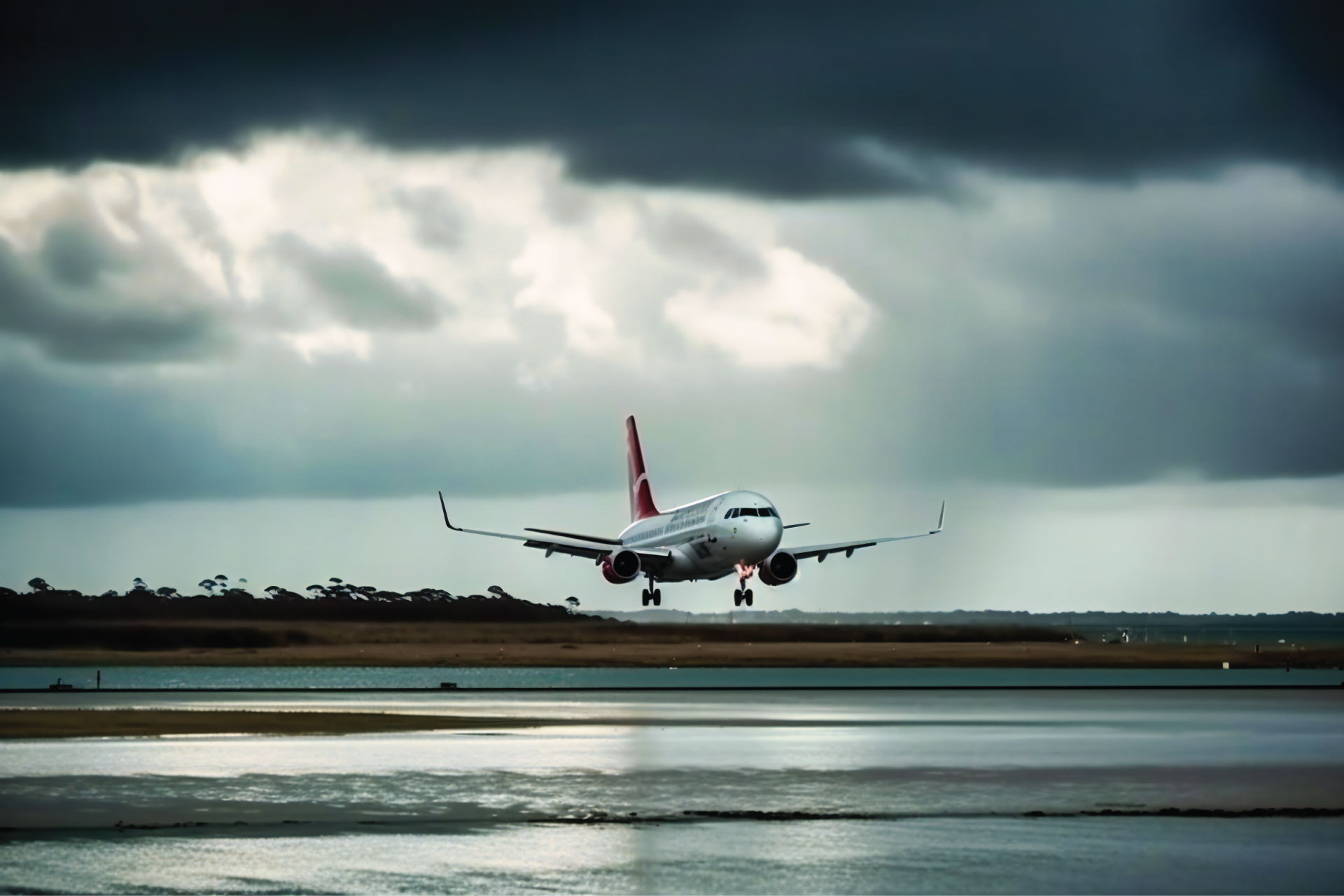Know How Weather Impacts Your Private Jet Charter Flight Performance
A journey through the skies aboard a private jet charter offers unparalleled expediency. It provides personalization far beyond commercial flights and has many perks from flexible scheduling to access to a broader range of landing areas. One critical aspect that universally affects all forms of aviation is the weather effect on Private jet charter and aviation. However, expected weather phenomena can influence flight planning and flight routes. Comprehending these impacts is critical to refining travel expectations and plans for passengers opting for private jet flight. Let us illuminate how these atmospheric elements influence private jet charters and equip passengers with the knowledge to be best prepared for weather possibilities.
Basic Elements of Weather Effect on Flights
Meteorological conditions profoundly impact all aspects of aviation. Many challenges exist in maintaining flight schedules that ensure safety and comfortable travel. However, understanding weather effects on flights starts with recognizing how various weather phenomena can affect aircraft routines. This includes flight paths and the decision-making planners of pilots and flight crews.
Major Weather Influence on Air travel
So, can planes fly in bad weather? This is the query every passenger must answer before flying. Thus, weather affects aviation in many behaviors. The planning team and pilots review weather reports and forecasts before a flight to gauge conditions along the intended direction. So far, it has identified weather hazards like how rain affects planes’ ability. to necessitate route adjustments or flight stay. True weather predictions allow flight crews to prepare for various emergencies for the safety of everyone involved. It also optimizes the flight path for fuel proficiency.
Strong Weather Phenomena Affecting Flight Schedules and Protection
Sky Lightning & Thunderstorm Condition
They can cause severe turbulence and temporary disruptions at airports and increase risks during the takeoff and landing stages. To avoid downpours, flights need to be rerouted or delayed.
Huge Cyclones & Tornadoes During Flight
Hefty storms bring powerful winds and heavy rain to weather. They can change flight plans and lead to flight cancellations and rerouting to avoid the route of storms.
Extreme Snowstorms and gale
Frosty ice and snow can limit visibility and affect aircraft functionality. It requires extensive deicing processes before departure. However, snow accumulation on runways can further impact ability to land and take off securely.
Air Icing Circumstances
Humid air can lead to ice formation on an aircraft’s wings and control surfaces when flying through a cold atmosphere. It affects safety and functionality. So, pilots must carefully manage altitude and routes to avoid such situations.
Detailed Weather Effect on Jets During Flying
All private jets offer distinct advantages and challenges in confronting weather effects on jets due to their smaller size and operational agility compared to commercial planes. Yet, it maneuvers through atmospheric elements with sophistication and plans to the highest safety and comfort measures. The size and flexibility that makes them appealing can also present unique hurdles in adverse situations.
Dual Edged Sword of Flexibility and Size
No doubt, private jets are generally smaller than commercial planes. So this agility enables them to alter routes or adjust altitudes. They can select alternative airports with shorter announcements. This same size can make them more susceptible to certain weather phenomena felt more acutely in a smaller cabin of plane. It requires a keen understanding of weather patterns and robust pre-flight scheduling. Thus, their operational flexibility allows them to avoid major weather systems easily by flying when commercial airlines cannot fly.
Weather Turbulence Ahead
Travelers might more strongly feel changes in air movement in smaller aircraft. Pilots of private jets are highly trained to handle these rough areas. They use advanced weather radar to anticipate and navigate turbulent areas when necessary. However, detouring around instability zones or adjusting flight altitudes are standard applies. While pilots adept at minimizing discomfort safety remains dominant!
Sky Visibility Level
Dense visibility from fog or snow is a challenge for all aeronautics. It can complicate takeoff and landing procedures. Pilots rely more heavily on instruments and onboard map reading. Thus, private jets benefit from accessing a broader range of airports with advanced landing systems that accommodate low visibility procedures. Bare visibility constraints can still lead to delays or the necessity for alternate landing spots.
Airstream
Airstream or wind affect everything from takeoff and landing procedures to flight fuel ingesting.
- Extreme crosswinds challenge pilots during takeoffs and landings and require skillful maneuvering for safety.
- High headwinds slow an aircraft’s progress. It leads to increased fuel consumption and flight extends.
- Conversely, tailwinds can expedite journeys. It requires careful management to maintain controlled speeds and efficient procedures.
Weather Planning Pre-Flight – Can Planes Fly In Rain Easily
Weather planning before flight is an essential part of the flight preparation process for aviators. Thus, it ensures safety and optimizes the flight path for ease. It involves a detailed analysis of the weather conditions. It might make sure that, can planes fly in rain and can the flight continue nonstop from departure to arrival time? It includes en-route weather spectacles.
Meteorological Information in Decisions of Flight Trail
This data is crucial for flight planning. It helps in different ways.
Planning Route Carefully
Recognizing weather systems that could threaten the flight enable pilots to plan routes that avoid weather hazards.
Adjustment of Altitude While Flying
Thus, cloud layers information with temperature gradients and turbulence can influence the chosen cruising stature. So, pilots may fly above weather systems or in layers of the atmosphere with more favorable breezes.
Scheduling
Meteorological forecasts can determine the flight’s timing leading to delays or rescheduling to avoid severe elements.
Latest Technology and Weather Tracking Gears
Developments in technology have significantly improved the ability of pilots and flight planners to predict and respond to weather situations:
- Precise weather radar allows pilots to see weather conditions ahead in real-time to make informed decisions about route alterations.
- Digital satellite metaphors provide a broader view of weather patterns in long range planning. They identify large systems like hurricanes or widespread frosting.
- Computerized weather stations and forecasts deliver latest information about conditions at the departure and arrival zones.
Aircraft planning software integrates weather data to suggest optimal routes and altitudes. It considers current and forecasted situations.
Finding
So, the interplay between weather conditions and private jet charter operations is a complex aspect of aviation that directly influences safety and passenger ease. The nuance of weather’s impact on aviation allows passengers to appreciate the efforts that go into every private aircraft. Informed and prepared adjustments can significantly enhance traveling. However, understanding and appreciating this dynamic as passengers elevate the private flying experience from merely luxurious to genuinely thoughtful.
However, your experiences and inquiries enrich the conversation around private aviation. The skies remain the limits and the pinnacle of safety with enjoyable and eco conscious journeys.
Connect with the Conversation and Lift Your Journey with BluAvi Jets Today!
Ready to take your travel to new altitudes? Now, BluAvi Jets invites you to research exclusive insights on how weather influences your private jet charter travel. Find the classy dance between cutting edge technology and mother nature that make your journey luxuriously safe and globally mindful.
So, have you ever wondered how a storm could affect your departure time or how pilots navigate to give you the smoothest ride? Hence, you may be curious about our strides towards a greener horizon. Now, whatever your interest is! BluAvi Jets is your co-pilot in separating the mysteries of aviation elements.
You can share your sky high stories and ask questions. Express your love for the clouds above! And don’t just fly! Soar with knowledge and assurance. Thus, your next BluAvi Jets adventure wait for you! We customize every detail to perfection including the weather forecast and weather tracking tools.
It is time to charter the skies with intelligence and bravura.


